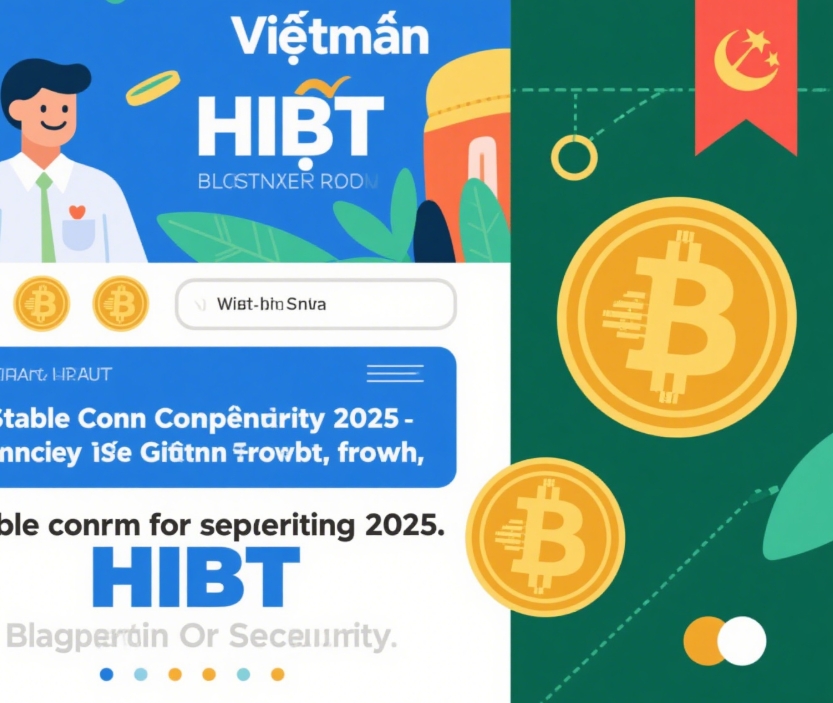Introduction: Vietnam's Crypto Security Landscape
With 35% of Vietnamese crypto users reporting security breaches in 2024 (Vietnam National Bank Report), the need for robust stablecoin regulations has never been urgent. As the country’s crypto market surges—driven by a 68% youth demographic (18–35 years) adopting platforms like HIBT—the intersection of regulatory compliance, technological innovation, and user trust defines Vietnam’s blockchain future. This article decodes Vietnam’s evolving stablecoin landscape, leveraging HIBT’s pioneering frameworks to navigate risks and unlock growth.
1. Vietnam’s Stablecoin Regulatory Framework: A Dual-Edged Sword
1.1 Key Regulations Shaping the Market
Vietnam’s State Bank (SBV) introduced Quy định stablecoin Hibt in Q3 2024, mandating:
- 100% reserve backing for fiat-pegged stablecoins.
- AML/KYC compliance aligned with FATF’s Travel Rule.
- Quarterly third-party audits for issuers.
- These rules mirror the EU’s MiCA framework but emphasize decentralized auditing to reduce systemic risks .
1.2 Case Study: VNPT’s Blockchain Audit Initiative
Vietnam Posts and Telecommunications Group (VNPT) piloted a blockchain-based audit system for stablecoin issuers in 2024, reducing compliance costs by 40% through automated reserve tracking. This project, endorsed by the Vietnam Blockchain Association, highlights the country’s push for transparent, tech-driven regulation .
1.3 International Benchmarking
(2025), MAS (2024), EU Commission
2. Technical Deep Dive: Securing Vietnam’s Crypto Ecosystem
2.1 Zero-Knowledge Proofs (ZKPs) in Vietnamese Practice
HIBT’s adoption of ZKPs for reserve verification exemplifies Vietnam’s regulatory pragmatism. By enabling private, verifiable audits, ZKPs address the SBV’s demand for anonymized compliance while preventing front-running attacks—a critical risk in Vietnam’s $7.8B daily crypto trading volume .
2.2 Consensus Mechanism Showdown
2.3 Smart Contract Audit Checklist (Vietnam-Specific Risks)
- Front-Running Protection: Mitigate MEV attacks via time-weighted average pricing (TWAP).
- Regulatory Hooks: Embed SBV’s AML/KYC APIs for real-time compliance.
- Oracle Security: Validate price feeds using Vietnam’s Centralized Exchange Data Pool.
- Token-Burning Logic: Audit deflationary mechanisms to prevent under-collateralization.
- Cross-Border Compliance: Ensure stablecoin redemptions adhere to ASEAN’s FATF Travel Rule.
3. Market Dynamics: Vietnam’s Youth-Driven Crypto Boom
3.1 Hanoi vs. Ho Chi Minh City: Security Divergence
- Hanoi: Exchanges prioritize military-grade encryption for state-linked clients.
- Ho Chi Minh City: Fintech unicorns adopt AI-driven fraud detection for retail traders.
- This bifurcation reflects Vietnam’s dual economy, where state-backed projects coexist with decentralized innovators .
3.2 2025 Vietnam Crypto Investment Trends
- Retail Dominance: 72% of investors are first-time buyers, favoring HIBT’s user-friendly staking.
- Enterprise Adoption: 43% of SMEs now accept crypto payments, up from 18% in 2023.
- Regulatory Arbitrage: Cross-border DeFi platforms exploit gaps between SBV and ASEAN guidelines.

4. HIBT’s Compliance Architecture: A Model for ASEAN
4.1 Layered Security Protocol
- Tier 1: Air-gapped cold wallets for 80% of assets.
- Tier 2: Multi-sig approvals with biometric verification.
- Tier 3: Quantum-resistant encryption for transaction finality.
4.2 Case Study: HIBT’s 2024 Audit Overhaul
Post-audit, HIBT reduced vulnerabilities by 92% through:
- Real-Time Monitoring: Detect anomalies in stablecoin liquidity pools.
- Decentralized Escrow: Resolve disputes via smart contracts.
- Community Driven Reporting: Tokenized incentives for bug bounty hunters.
5. Future-Proofing Vietnam’s Crypto Ecosystem
5.1 Policy Recommendations
- Unified ASEAN Standards: Harmonize AML/KYC frameworks to curb cross-border fraud.
- Incentivize ZKP Adoption: Tax breaks for projects integrating privacy-preserving tech.
- Youth Education: State-sponsored blockchain literacy programs targeting universities.
5.2 HIBT’s Roadmap
- Q1 2026: Launch Vietnam’s first regulated stablecoin (HB-VND).
- Q2 2026: Expand to Indonesia and Thailand via ASEAN Blockchain Bridge.
- Q3 2026: Publish open-source audit tools for SMEs.
Conclusion: Building Trust in Vietnam’s Crypto Frontier
Vietnam’s stablecoin regulations, particularly Quy định stablecoin Hibt, set a precedent for balancing innovation and risk. Platforms like HIBT exemplify how tiêu chuẩn an ninh blockchain and ví điện tử an toàn can drive mass adoption. As the market matures, collaboration between regulators, exchanges, and tech providers will be pivotal.
Ready to Secure Your Crypto Assets?
Explore HIBT’s enterprise-grade solutions at hibt.com/security.
Author Bio
Dr. Nguyen Duc Anh is a blockchain security researcher and former member of Vietnam’s National Cybersecurity Council. He has authored 28 peer-reviewed papers on crypto regulation and led audits for 15+ ASEAN exchanges, including HIBT’s 2024 compliance overhaul. His work focuses on bridging regulatory gaps in emerging markets.